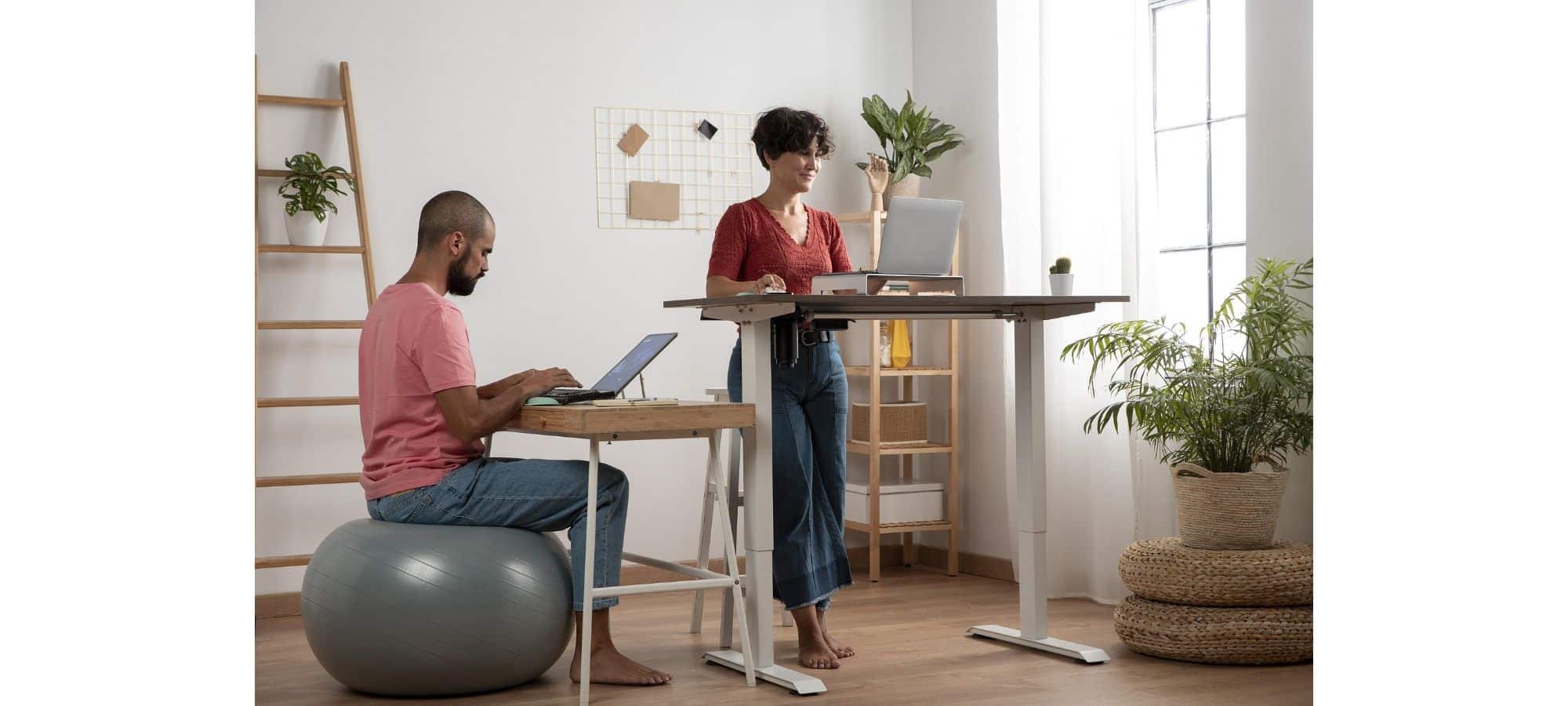Spotlight on Office Ergonomics: Setting Up Your Desk and Workstation | CCOHS Tips
In today’s modern world, where many of us spend the majority of our day seated at a desk, it’s crucial to prioritize the design and arrangement of our workspaces. The concept of ergonomics, which focuses on optimizing human well-being and performance in the working environment, plays a pivotal role in achieving this goal. By understanding and implementing key ergonomic principles, individuals can create workstations that foster comfort, productivity, and long-term health. In this comprehensive guide, we’ll delve into the intricacies of desk ergonomics and workstation setup, exploring the science behind it and providing practical tips for implementation.
Understanding the Science of Ergonomics
Ergonomics is the scientific discipline concerned with designing environments, products, and systems to accommodate the needs and capabilities of individuals. In the context of office ergonomics, the goal is to create workspaces that promote postural resiliency, reduce physical strain, and enhance overall well-being. By aligning the physical requirements of the task with the capabilities of the human body, ergonomic principles aim to minimize the risk of musculoskeletal disorders and improve efficiency and satisfaction in the workplace.
Key Elements of Desk Ergonomics
1. Desk and Chair Height
The height of your desk and chair is pivotal in maintaining proper alignment and reducing strain on your body. Ideally, your desk should be at a height that allows your elbows to rest comfortably at a 90-degree angle when typing, with your wrists straight and parallel to the floor. Similarly, your chair should be adjusted so that your feet rest flat on the floor or on a footrest, with your thighs parallel to the ground and your lower back supported by the chair’s lumbar cushion.
2. Keyboard and Mouse Placement
The placement of your keyboard and mouse can significantly impact your comfort and productivity. Position them at a height that allows your wrists to remain relaxed at about 30 degrees extension (this does not need to be an exact science). Consider using an ergonomic keyboard and mouse with padded wrist support to reduce strain on your wrists and forearms. Additionally, ensure that your mouse is located close to your keyboard to minimize reaching movements.
3. Monitor Positioning
Proper monitor positioning is essential for maintaining good posture and reducing neck strain. Position your monitor directly in front of you at eye level, approximately an arm’s length away. This positioning allows you to maintain a neutral head position without tilting or straining your neck. If using a laptop, consider using a laptop stand or external monitor to achieve the optimal height and angle.
4. Posture and Seating
Maintaining good posture while seated is critical for reducing the risk of back pain and discomfort. Sit back in your chair with your back supported by the chair’s backrest, ensuring your shoulders are relaxed. Avoid slouching or leaning forward, as this can lead to joint sensitization and muscle fatigue. Additionally, adjust your chair’s height and tilt to ensure that your thighs are parallel to the ground and your feet are firmly planted on the floor or a footrest.
5. Workspace Organization
A well-organized workspace can improve efficiency and reduce the risk of repetitive strain injuries. Keep frequently used items within easy reach to minimize reaching and twisting movements. Use cable management systems to keep cords and cables tidy and out of the way. Consider investing in ergonomic accessories such as document holders and monitor arms to optimize your workspace layout and reduce clutter.
The Benefits of Ergonomic Workstations
Implementing ergonomic principles in your workstation setup offers a multitude of benefits, including:
- Reduced Risk of Musculoskeletal Disorders: Proper ergonomics can help prevent common workplace injuries such as back pain, neck strain, and carpal tunnel syndrome.
- Improved Comfort and Productivity: A well-designed workspace promotes comfort and reduces fatigue, allowing you to focus on tasks for longer periods without discomfort.
- Enhanced Efficiency and Performance: By optimizing your workstation layout and posture, you can improve workflow efficiency and overall performance.
- Long-Term Health and Well-Being: Investing in ergonomic equipment and practices can contribute to better long-term health outcomes, reducing the likelihood of chronic pain and disability.
Practical Tips for Implementing Ergonomics in the Workplace
- Conduct a Workspace Assessment: Evaluate your current workstation setup and identify any areas that may need improvement. Pay attention to desk height, chair adjustment, monitor positioning, and overall ergonomics.
- Invest in Ergonomic Furniture and Accessories: Consider upgrading to ergonomic furniture such as adjustable desks, ergonomic chairs, and keyboard trays. Additionally, invest in accessories such as wrist rests, monitor arms, and footrests to further enhance comfort and support.
- Take Regular Breaks: Incorporate regular breaks into your workday. This allows the body and nervous system to experience variability in movement, creating reference points for threats and improving pain thresholds. Use this time to change positions, walk around, and engage in gentle stretching or mobility exercises to alleviate tension and fatigue.
- Practice Good Posture Habits: Be mindful of your posture throughout the day and make adjustments as needed. Focus on sitting back in your chair with your back supported, shoulders relaxed, and feet flat on the floor.
- Stay Active Outside of Work: Engage in regular physical activity outside of work to strengthen your muscles, improve flexibility, and reduce the risk of musculoskeletal issues. Incorporate activities such as walking, yoga, or strength training into your routine to promote overall well-being.
Conclusion
Desk ergonomics and workstation setup play a crucial role in promoting comfort, productivity, and long-term health in the workplace. We live in a society where the majority of jobs encourage sedentary behaviours, and our body needs movement variability in order to accurately inform us ( through pain) of threats to our well-being. Sedentary jobs often result in a relatively low risk of structural harm, but that does not absolve them from creating profound pain.
By understanding and implementing key ergonomic principles, individuals can create workspaces that support postural resiliency, reduce physical strain, and enhance overall well-being. Whether you’re working in a traditional office setting or from the comfort of your home, investing in ergonomic equipment and practices can make a significant difference in your comfort, efficiency, and satisfaction at work. Take the time to assess your workstation setup, make necessary adjustments, and reap the benefits of a well-designed ergonomic workspace.

